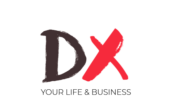If you’re a small or medium-sized business owner, you might recognize this story.
You’ve been running your business for years. Maybe it was passed down from your parents. Or maybe you built it from the ground up with grit and long nights. Either way, it’s survived. It earns.
But now, it feels chaotic.
No organizational chart. No job descriptions. No systems. No clear accountability. Everyone reports to you. Every decision needs your approval. Every mistake ends up on your plate.
And you’re overwhelmed, wondering: Where do I even begin to fix this?
If this sounds familiar, you’re not alone. And in this blog, I’ll walk you through a proven framework that has helped dozens of business owners like you take their companies from survival mode to scale-ready.
From Chaos to Clarity: My Client’s Story
One of my clients runs a customized office furniture business. It’s a legacy company—handed down from their father.
Sales were coming in, but internally, things were falling apart:
- Missed production deadlines
- Constant confusion among staff
- Customers complaining about unclear updates
- A tired, reactive CEO
There were no systems. No structure. And no clue which jobs were even profitable.
That’s where we came in. We fixed the chaos using a four-phase framework that I now use across all my coaching and consulting engagements.
Phase 0: Prepare to Lead the Transformation
Before you fix the business, you need to fix how you lead it. This starts with understanding corporate governance for small businesses.
What is Corporate Governance for SMEs?
Corporate governance doesn’t mean more meetings or red tape. It’s about clarity, structure, and accountability. It lays the foundation so your team knows who’s responsible, and you can step back from daily firefighting.
Here’s what we set up:
- Leadership Syncs – Weekly check-ins with department heads to review operations and remove roadblocks
- Financial Pulse Checks – Monthly reviews of cash flow, receivables, payables, and runway with the finance head
- KPI Dashboard Reviews – Simple tracking of sales, timelines, and customer satisfaction metrics
- Governance Tasks – Systems for pricing approvals, policy sign-offs, and legal compliance
- Performance Check-ins – Monthly performance conversations with key people
- Stakeholder Updates – Monthly email updates to keep internal and external partners informed
Want to take charge of your leadership style and align it with your business goals? Check out my course, Prioritize Like a CEO – built for busy entrepreneurs who want to lead with intention and focus.
Phase 1: Build Organizational Clarity
Your next step is to create an organizational structure—even if your business is small.
Why Org Charts and Job Descriptions Matter?
Without role clarity, delegation fails. Without delegation, you stay trapped in every decision.
Here’s how we helped my client:
- Designed a Simple Org Chart – Just five roles: Sales, Production, Admin, Operations, and Finance
- Wrote Basic Job Descriptions – Five to seven key responsibilities for each role
- Mapped Key Workflows – From sales inquiry to quotation, to production, billing, and delivery
- Identified Bottlenecks – Sales gave vague specs, production had no updates, and handoffs were unclear
Each department got a point person and process flow charts were posted on the wall. Everyone now knew their role and their lane.
Need help creating org charts and SOPs for your team? Explore my HR Starter Digital Course—perfect for SMEs ready to scale with structure.
Phase 2: Strategic Planning & KPI Setup
Now that the foundation is set, it’s time to define what success looks like and how to measure it.
The Mini Strategic Planning Process
We ran a workshop that included:
- SWOT Analysis – Strengths, weaknesses, opportunities, and threats
- 6-Month SMART Goals – E.g., reduce production lead time from 21 to 14 days
KPI Assignment by Department
Production KPIs
- Turnaround Time per Job
- On-Time Delivery Rate
- Production Error Rate
Sales KPIs:
- Monthly Bookings
- Quote-to-Win Ratio
- Average Order Value
Finance KPIs:
- Gross Margin
- Accounts Receivable Days
Each KPI was assigned to a person. Weekly dashboard reviews ensured accountability and continuous improvement.
Phase 3: System Implementation & Behavior Change
At this stage, you don’t need to jump into expensive software just yet.
We started small and simple:
- Google Sheets – To track production schedules
- Trello – For managing job orders
- Messenger – For real-time updates
The focus? Behavior and consistency.
We trained the team to log updates and reviewed the dashboard weekly:
- What’s working?
- What’s stuck?
- What needs to change?
Once they built the habit, we moved them to a tailored ERP system that gave full visibility of inventory, job orders, and financials.
Lesson: The system is not the software—it’s the behavior you build around it.
Results After 6 Months
Here’s what changed:
- The owner no longer made every decision
- The team became more confident and proactive
- Delivery deadlines were consistently met
- Gross margin improved by 18%
All by implementing 4 phases:
- Lead the transformation
- Build organizational structure
- Set direction with KPIs
- Implement systems gradually
Final Thoughts: Start Small, But Start Now
If you’re stuck in chaos, the solution isn’t overnight change. It’s small steps with consistent execution.
Start with one org chart. One performance dashboard. One weekly sync.
Those are the seeds of scalable growth.
Ready to Take the First Step?
If you want guided support, our team offers both in-person workshops and strategic planning and business process review. Learn more here.
Let’s build your business—with clarity, structure, and sanity.
